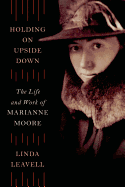
Marianne Moore's poetry preceded by three decades the female icons of 20th-century American "modernism," Sylvia Plath and Anne Sexton. Compared to the edgy profligacy of Plath and Sexton, Moore lived a rather prosaic life. In her exhaustive biography Holding On Upside Down, Linda Leavell suggests Moore lost the academic spotlight because "the wizened, androgynous, admittedly prudish little lady in the tricorne would come to seem irrelevant, even embarrassing, within the youth culture of the late 1960s and '70s." Little did they know, she adds, the "fatherless Moore had been reared by lesbians and educated by feminists."
Leavell covers Moore's early years in depth. Her absent father's religious fanaticism led to his institutionalization for "delusional monomania." When she was 10, her mother fell in love with her pastor's daughter; they shared a surprisingly open relationship for decades. After graduating from Bryn Mawr, Moore never married, moved back in with her mother and had an almost obsessive lifelong attachment to her older brother. Much of their correspondence is still available, and Leavell quotes liberally to fill in the story.
Leavell traces the evolution of Moore's style with brief illustrations from both published and unpublished work. She comfortably folds critical commentary into her narrative with quotations from the letters of Moore's contemporaries who encouraged and praised her.
Reed thin and plagued with frequent illness, Moore was a lifelong scholar and poet whose experiments with stanza, rhyme and image heralded the end of 19th-century poetry and the dawn of a freer, more vernacular verse. Holding On Upside Down goes a long way toward restoring Moore's place as a cornerstone of modern American poetry. --Bruce Jacobs

